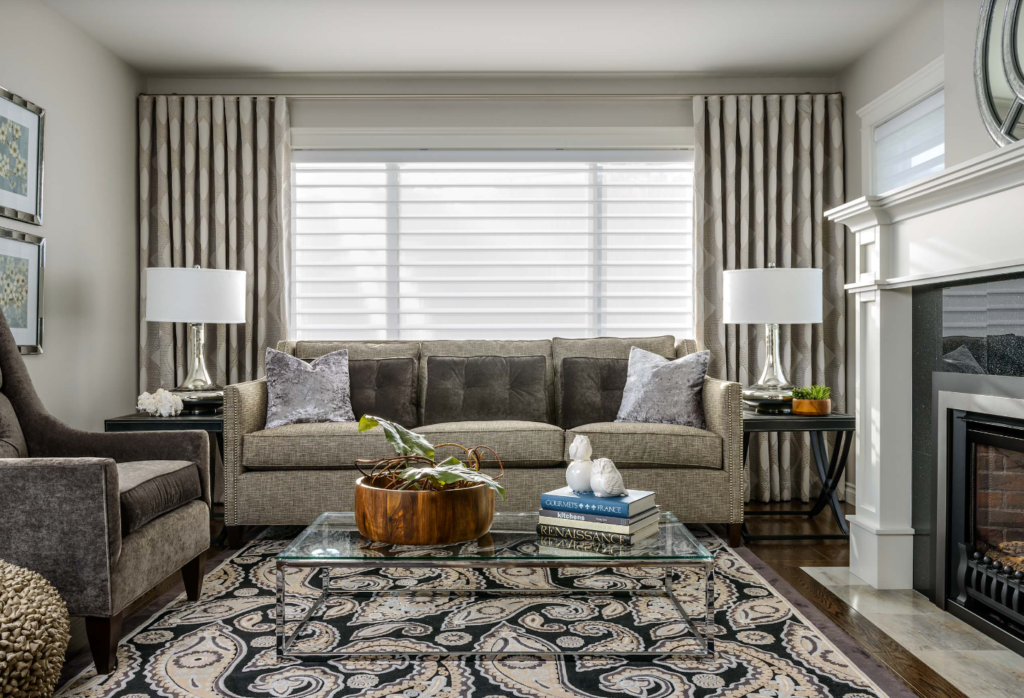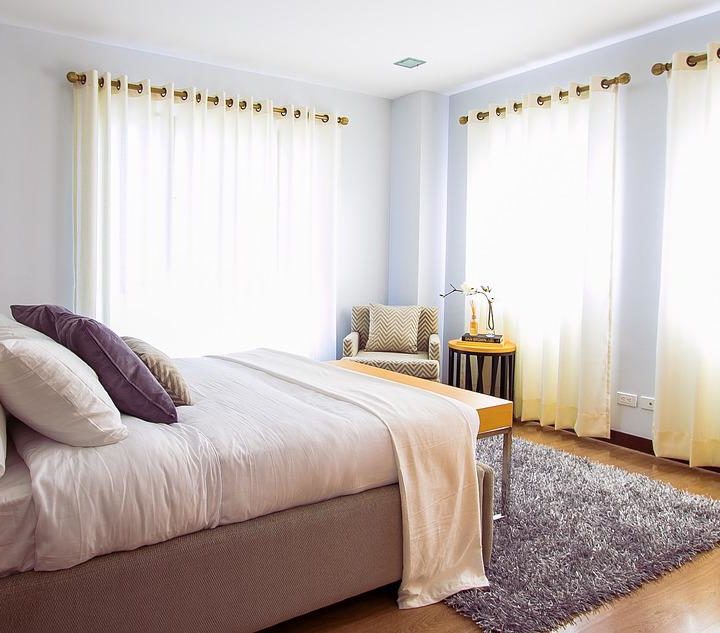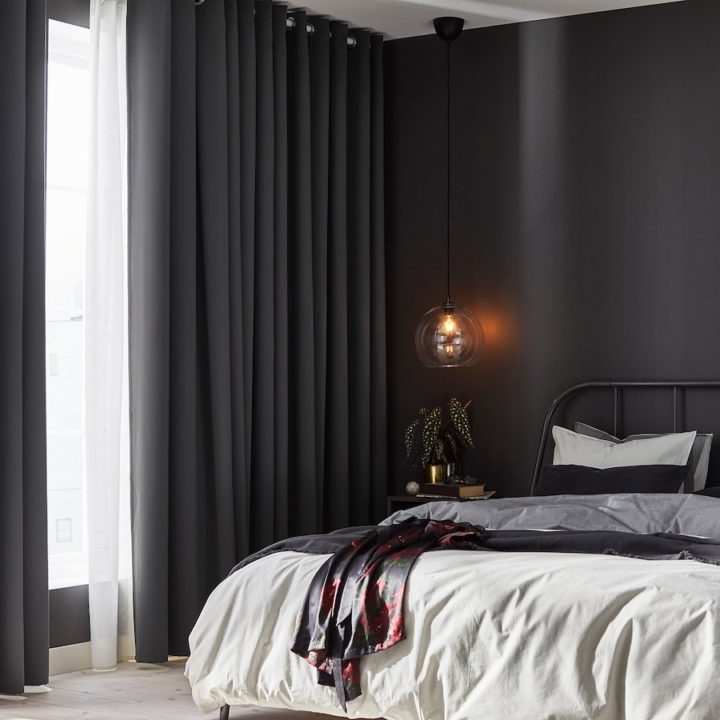Spiffy Speak
HOW TO PUT CURTAINS OVER BLINDS
Looking to revamp your home and salvage your window decor from the sterile look of your blinds? Layering your blinds with curtains is one of the most successful methods of achieving this goal. Curtains add versatility to functionality and bring unique charm to the space. With that goal, in this blog, we’ll share with you a wholesome guide on why and how to put curtains over blinds.
Order your custom curtains from Spiffy Spools online in any size. We have over 3,000 fabrics and patterns to pick from, so you can find the perfect one to go with your blinds easily.
Why Layer Your Blinds with Curtains
Many buildings and homes today have blinds installed by the builder so that the homeowners don’t have to go through any hassles to make their space private. But while privacy is assured and the light control options available are truly impressive, you might be left wanting for more insulation and aesthetic pleasance.
Blinds are strictly function-oriented, minimal and neutral, incapable of bringing in colors and patterns, whereas curtains offer scope to introduce the design details that you might be looking to characterize your home with. Curtains relay your decor style, palette, and personal preference to the highest possible degree.
Thanks to the soft pleating and the flowing trails of curtains, one does not have to settle for seemingly bare windows when the blinds are stacked up in the cassette. And that sad industrial look of the blinds, which makes them more suited to a business office than to a cozy home, can be made up for with the oomph and character that curtains effortlessly bestow.
Besides being highly customizable, curtains layered over blinds enrich the persona of the room by adding volume to the space. While blinds sit snug inside the window frame, curtains project outward, adding substance and dimension to the space. They make the space come alive with visual depth creating a more elevated and lived-in feel.
In addition to the aesthetic benefits noted above, layering your blinds with curtains offers other great benefits, such as –
INSULATION & POWER SAVINGS: A lot of thermal energy is lost through the slats of the blinds and windows, and this matter is of great concern when the temperatures are at their extremes. If the window coverings are not highly insulative, you end up overworking the heater, consequently sending the power bills over the roof. Curtains offer a thick insulative barrier as they entail generous use of fabric and block the heat from escaping.
VERSATILE LIGHT CONTROL: Louvered treatments give you many options for the amount of light you wish to allow into your space. But, even with all the slats closed up tight on each other, light glows at the seams are inevitable. This is not a great situation in rooms that need total darkness such as bedrooms, nurseries and media rooms. Hanging curtains over the blinds cancels all light leaks – from around the blinds and between the slats. With a blackout lining, their room-darkening capacity can be further amped up.
ACOUSTIC BENEFITS: For the same reason that blinds fail to contain light and heat, they are ineffective in blocking external noise too. Curtains with their voluminous use of fabric are wonderful sound absorbents as they are excellent insulators. They minimize exterior sounds from entering the home and muffle indoor noises too, helping to create a quieter indoor ambiance.
SHOP NOW: CUSTOM INSULATIVE BLACKOUT CURTAINS FROM SPIFFY SPOOLS
How to Mount Curtains Over Blinds
One of the first decisions you’d need to make when layering your blinds with curtains is whether to opt for full-coverage drapes or to only use narrow, decorative panels to frame the windows. The answer, of course, depends on your budget and goals.
Narrow, stationary panels will bring some level of aesthetic appeal and be easy on your pocket, but be limited in any other functional benefits that full coverage drapery can bring to the space.
Whether decorative or functional, full-scaled or narrow, curtains are fulfilling for both the over-expectant homeowner and the ingenious designer.
So, if you’ve decided to top your blinds with curtains, either decorative or full-coverage, you couldn’t be more spot-on with your design decisions. Just get your research done here on how to hang curtains over blinds, and let your creative juices flow. Here are the top methods of hanging curtains over blinds –
Drapery Rods
This is the conventional way of hanging curtains over blinds. The blinds are mounted within the recess of the window and the curtains overlap the window from all sides. The light leaks from around the blinds are contained well in this method.
To achieve this look, measure the window and get a drapery pole of a suitable length. Then screw the curtain rod brackets to the wall and position the pole securely within the brackets.
For decorative curtains, install small rods at the two ends of the window so that the drapes stay intact in their position, framing the window. Alternatively, you can also use sash rods or medallion holdbacks to host the drapes as they are narrow and lightweight.
Drapery Tracks
Tracks are a more modern solution with their sleek non-ornate profiles. You can order traverse tracks to operate curtains at the pull of a string. Although tracks are mostly installed onto the ceilings for the curtains to blend seamlessly, with the right brackets, they can also be mounted on the walls just like drapery rods.
However, mounting the tracks on the ceiling is recommended if you have outside-mounted shades/blinds. This is because you get more flexibility of space to bring the curtains further away from the window and give the blinds/shades the space they need for operation.
Drapery Medallion Hold-backs
An age-old method of hanging stationary, decorative drapes is being revived of late and for good. Employing the use of ornate medallion holdbacks, this arrangement is especially popular for windows with specialty shapes like arches or triangles.
You might need three to five medallions to hang a narrow decorative curtain panel. The medallion hold-backs are screwed to the wall at equal distance. With the help of rings or fabric loops, the curtain is then hung such that the panel forms folds between the medallions. Since this hardware ‘fixes’ the panel in this method, the risk of curtains sliding back and forth as in case of rods and tracks is canceled. So, you can rest assured that curtains will never overtake the blinds but frame them perfectly and with a well-deserved decorative touch.
SAFETY TIP: If your windows/ceilings have particularly large lintels, it can make drilling holes into them to secure hardware challenging and sometime beyond beyond DIY.
Choosing the right anchoring method is crucial. Expansion anchors or concrete screws are commonly used for attaching fixtures to lintels. Ensure that you select anchors that are suitable for the lintel material and the load you plan to hang. Using the appropriate drill bits designed for the specific material can also significantly affect drilling efficiency. If you notice your drill sparking or slowing down, then it could be a sign of worn carbon brushes, in which case they will need to be replaced.
If you continue encountering difficulties or if the lintels are exceptionally hard or challenging to work with, consider seeking the assistance of a professional contractor or handyman with the experience and tools required to tackle the job safely & effectively.
No-Drill Headrail Bracket Attachments
In this method, you make use of specialty hardware specifically designed to hang curtains using the headrail of the blinds. If you are not allowed to drill holes in the walls by the homeowner or if you don’t have access to power tools and professional help, this method of mounting curtains is an excellent option.
Depending on whether your blinds are inside-mounted or outside-mounted, you can get special bracket attachments that lock onto the blind headrail. If your blinds are installed in the window frame, opt for the ‘Inside-mounted blind curtain rod attachment’. And otherwise, opt for the ‘Outside-mounted blind curtain rod attachment’.
Make sure that the headrail is able to bear the additional load of the curtains. Measure the width of your headrail and purchase brackets that fit around them. Then position the pole upon the brackets.
In this method, the curtains stand exactly over the blinds as their coverage is limited by the length and vertical position of the headrail.
No-Drill Curtain Rod Brackets
Another no-drill method is to use drapery rod brackets such as Kwik-Hang brackets which are hammered atop the window frame. This type of bracket can only be used where the window frame is jutting out from the wall. No screws or additional hardware are required to mount these brackets. However, the curtains will not have ample space away from the windows for stacking, so expect them to block the window partially at the jambs.
Adhesive Hooks
Adhesive hooks such as Command Hooks that can hold weights up to 5-10 pounds can be used instead of brackets.
Depending on the weight of the drapery rod, you may need to use more than two hooks, though we recommend that drapery be kept lightweight regardless when using adhesive hooks.
Make sure you mark the exact position for brackets on the wall beforehand to avoid making mistakes. Just peel off the paper at the back of the hook and stick the hook to the wall. Then, slowly nudge the drapery rod with the curtains into the hook.
As the curtains will sit flush against the wall, this method is perfect for decorative drapes that are meant to be kept stationary.
This method gives you the freedom to take the curtains higher and wider than the blinds. So, it is also great for functional drapes, provided that they are not too heavy for the adhesive hooks to handle.
Tension Rods
In certain situations, tension rods solve the problem in a jiffy. These rods are spring-loaded and sit taut between the walls.
Tension rods can be used if walls run perpendicular to the window on both sides. Just hold the rod in the right position and then unwind the loose end slowly until it sits taut between the two walls.
Once the curtains are mounted, give them a gentle tug to make sure that the rod is not rickety, if it’s tight, your job is done. However, to be on the safer side, it’s advisable to use tension rods only for lightweight curtains.
If you’re hanging short curtains and the window frame is deep enough, you can install the tension rods within the frame itself. In this case, you need to first ensure that the curtains will not interfere with the functioning of the blinds or cut access to them in any way.
In case your window frame is too shallow to accommodate both blinds and tension curtain rods, explore tension rods that project away from the window. These often come with decorative finials, making the hardware look better, and just in case you need extra support for heavy curtains, these also have holes for you to screw them in if you have the option.
In Closing
Which method you decide to mount your curtains over blinds depends entirely on the position that you prefer to hang your curtains from and the possibility or lack of it to drill. If you can drill the wall, you can hang the curtains above the window, attaching the brackets either to the wall or the ceiling above the window. If you cannot drill the wall, as is the case when you live in rental apartments or camper RVs, the next best option is curtain rod attachments and no-drill brackets. If there are supporting walls on the sides or a deep recess, you can consider tension rods.
We hope this guide on how to put curtains over blinds has helped you get the perfect look for your space! If you’re ready to shop for custom curtains, browse Spiffy Spools today. With over 3,000 fabrics and patterns, we’re sure to have an option that suits your design needs. Explore our site to find the perfect curtain selection for your home, and don’t hesitate to contact us with any questions.
READ MORE: LAYERING ROMAN SHADES WITH CURTAINS















